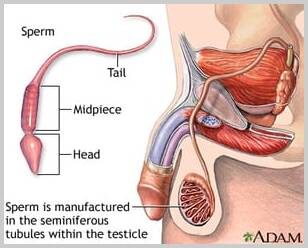
Vasectomy Reversal
A vasectomy is a minor surgical procedure that stops the flow of sperm between the testicle and the urethra by blocking the vas deferens, the tube that carries sperm to the testicle and through the urethra to the ejaculatory duct. A vasectomy is a permanent means of birth control. However sometimes a man may decide to have the vasectomy reversed. In some cases, a vasectomy reversal may be performed to treat testicular pain that has developed as a result of the initial vasectomy procedure.
The Vasectomy Reversal Procedure
The vasectomy reversal is performed in the hospital as an out-patient procedure under anesthesia. There are two different options for performing the procedure. It is decided during the procedure which procedure is performed
Vasovasostomy
The vasovasostomy (VV) is the most common and straight forward approach for performing a vasectomy reversal. During this procedure the ends of the vas deferens are surgically reconnected to create a passageway for sperm. This has the highest success rate of seeing sperm in the ejaculate.
Vasoepididymostomy
A vasoepididymostomy (VE) is a more complicated procedure, and this approach may be used if a vasovasostomy will not be successful. If there is scarring at the site of the previous vasectomy or it has been many years since the vasectomy was completed, there is a higher probability of needing the more complex procedure. During this procedure, the surgeon attaches the vas deferens directly to the epididymis, the organ behind each testicle that holds sperm.
.
Recovery from a Vasectomy Reversal
After the procedure, the incisions are covered with bandages, and the groin area may be swollen and may feel painful. Ice is applied frequently to treat swelling and medication is used for pain but should be used sparingly. Patients are advised to wear tight- fitting under garments or a jock-strap for support for several weeks after the procedure. Sexual intercourse should be avoided for 2 to 4 weeks after a vasectomy reversal. Most patients can return to regular physical work within a week or two, but it is recommended no heavy lifting for approximately 1 month after the procedure.
A semen analysis is performed every 2 to 3 months after surgery to monitor sperm count. Some medications may also be given with each visit. Sperm normally appear in the semen within a few months after a vasovasostomy, although after a vasoepididymostomy, it may take up to a year for sperm to appear. Frequent ejaculation is encouraged after the initial recovery period.
Risks of a Vasectomy Reversal
A vasectomy reversal is considered a safe and low-risk procedure, however possible complications may include (but not limited to):
● Infection
● Bleeding within the scrotum and swelling
● Chronic pain following the procedure
● Testicular loss or damage
